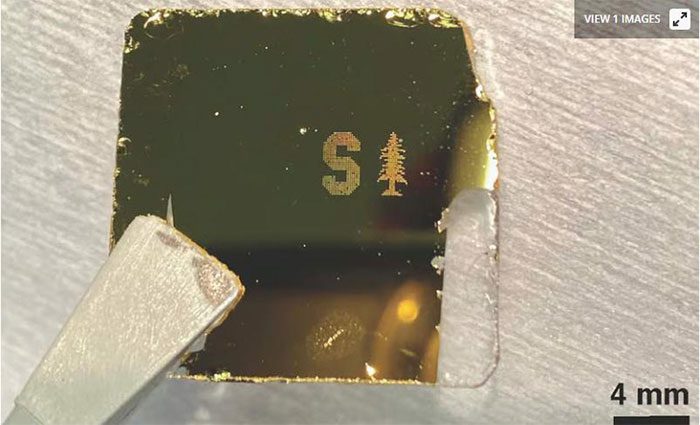To identify the type of bacteria, liquid samples must be cultured in a laboratory for several hours or days. However, a new laser technique can detect bacteria in just a few minutes.
When exposed to laser light, bacteria reflect the light in a spectral pattern unique to that specific type of bacteria. This phenomenon is colloquially referred to as the “spectral fingerprint” of bacteria.

The logo of Stanford University created from droplets containing bacteria and red blood cells, printed on a gold-coated slide – (Photo: NEW ATLAS).
Based on this, scientists have developed a new laser technique that requires only a few minutes to detect bacteria, according to New Atlas. They have tested this method to “find” bacteria in ovarian cancer samples.
Ovarian cancer is one of the most dangerous cancers affecting the female reproductive system. The challenge lies in the microscopic objects in liquid samples suspected of containing ovarian cancer—such as blood cells or viruses—also reflecting light, creating their unique swirling motion. Thus, the “fingerprint” of the bacteria is lost amidst the surrounding noise, making it indistinguishable.
Professor Jennifer Dionne and a team of scientists at Stanford University (USA) have come up with a solution to this problem.
Their technique combines a modified inkjet printer that uses sound pulses to print tiny droplets of the aforementioned liquid. Printed on a slide, each droplet has a volume no larger than two trillionths of a liter.
Because the droplets are so small, they contain a maximum of a few dozen cells, so any present bacteria will be easily detectable.
Additionally, gold nanoparticles added to the small samples will self-attach to the bacteria, acting as antennas to capture the laser light. As a result, the “fingerprint” of the reflected spectrum from the bacteria is over 1,500 times stronger than through other methods. This enables machine learning-based software to easily detect that fingerprint and match it to a specific type of bacteria.
This technology was primarily developed using blood samples from affected mice as the liquid. However, Professor Dionne believes it will be equally effective in analyzing other liquids. It may even be adjusted to target other types of cells, such as viruses.
“This is an innovative solution with the potential to save patients’ lives. We are very excited about the commercialization opportunities that could redefine the standards for bacteria detection and the characteristics of single cells,” said Amr Saleh, a professor at Cairo University and co-author of the study.


















































